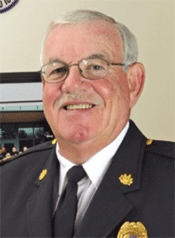 For decades, the safety of the public in communities along the southwestern border of the United States has been threatened by violence; the work of criminal organizations; and the enormous flow of drugs, money, and firearms between the United States and Mexico.
For decades, the safety of the public in communities along the southwestern border of the United States has been threatened by violence; the work of criminal organizations; and the enormous flow of drugs, money, and firearms between the United States and Mexico.
Over the last several years, the list of innocent crime victims lost in the drug trade along the Mexican border has grown at a horrifying and terrible rate. In March, the murder of workers at the U.S. Consulate signaled a disturbing turn in events. Investigators determined that these individuals were targeted because it was believed they were public safety officials. As a result of this attack, communities along the border were cautioned to be on special alert, and police officers in particular were told to take special measures to ensure their safety and the safety of their families.
These troubling developments were a focal point of discussion and concern at a Texas Association of Chiefs of Police meeting in early April that I had the privilege of attending. Chiefs who were present talked about the problems they were facing on the border and the need to get the attention of the federal government to acknowledge their challenges and their needs. Following that meeting, the IACP started to work with Laredo, Texas, Police Chief Carlos Maldonado, chair of the Texas chief’s Border Issues committee, to find ways to meet this goal.
To that end, in late April, the IACP reached out to senior staff in Vice President Biden’s office, who arranged for a meeting between the IACP, Chief Maldonado, and senior officials from the Obama administration and the U.S. Department of Justice. At this meeting, Chief Maldonado indicated that his city leadership was developing plans for a border summit. IACP staff worked with the chief to develop an agenda for the summit and to identify representatives from federal agencies, including the Department of Justice and the Department of Homeland Security, who could participate in the meeting.
This summit, sponsored by the city of Laredo and cosponsored by the Texas Association of Chiefs of Police, was held in early July and more than 80 participants from border communities and representatives from key federal agencies attended.
From the start, summit participants from large and small agencies made it clear that the key problem facing the border is the enormous flow of drugs coming out of Mexico into the United States and the reverse flow of money and firearms back to Mexico from the United States. And, at the center of the problem, directing, organizing, and manipulating the flow of drugs, firearms, and money, are the cartels that lead these criminal activities.
In recent years, the violence that accompanies virtually every aspect of this drug trade has become more frequent, more extreme, and more macabre in Mexico, and it has frequently been depicted in national and international media outlets. The violence and media reports have combined to destroy the tourism trade for many cities along the border, which combined with the more general downturn in the U.S. economy has generated significant financial challenges for many of these communities and has left city officials with no choice but to make deep cuts in municipal budgets, which have had a significant impact on police forces in the region.
Departments are understaffed presently and have to leave open positions vacant or reduce ranks through layoffs. Others are unable to replace worn-out equipment, establish effective communications systems, or even provide their departments with needed rifles and soft body armor, thereby leaving officers outgunned and in great peril. Simply stated, these losses in personnel and shortcomings in equipment have severely hindered the ability of police departments to respond efficiently to calls for service and perform proactive police work.
During two days of discussion, participants identified several key steps that should and must be taken to address the serious national security issue that the southwestern border presents to the United States. Ranging from greater coordination of effort to improved communication and intelligence sharing to providing dedicated assistance funds to southwestern border law enforcement agencies, these recommendations will guide the IACP’s efforts to address the many challenges that law enforcement agencies confront on a daily basis along this border.
It is impossible to walk away from a meeting like the one held in Laredo without expressing profound admiration for all the men and women at every level of law enforcement operations along the southwestern border of the United States. Clearly, the challenges they face are enormous and overwhelming at times. Police leaders in border communities feel they have value to add in finding solutions to problems identified; they need only to be asked. Yet despite the frustration and the sense often felt of being ignored and overlooked, they stick to the task and, by their dedication and commitment, are making a huge difference in providing for the public safety of every American at the border and elsewhere. But they cannot do it alone. They require the assistance and support of law enforcement agencies across the United States and around the world. We cannot let them down. ■
Please cite as:
Michael J. Carroll, Report from the Laredo, Texas, Summit,” The Police Chief 77 (August 2010): 6.


